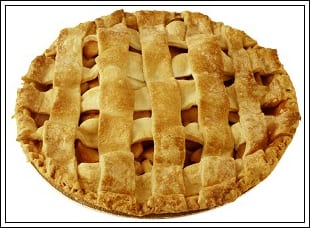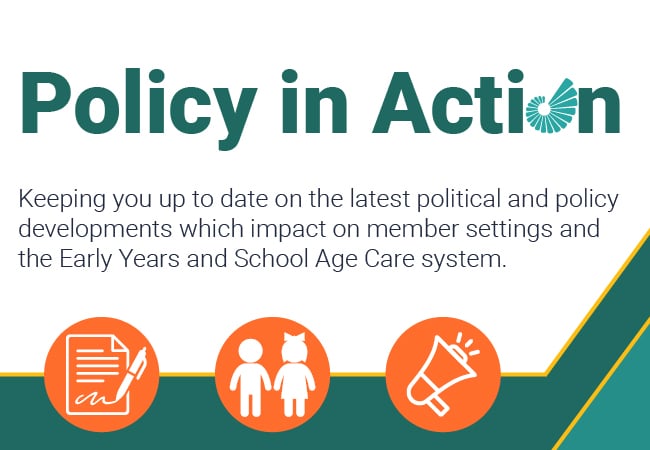Autumn is the season of nature’s harvest, with plenty of wild food available for humans, animals and birds. Orchard fruits, nuts and berries are in abundance, such as apples, blackberries, elderberries and rosehips. Traditionally this would have been the time when people harvested these fruits in order to preserve them, make jam and store them to last over the winter. Now we can buy almost any fruit or vegetable at any time of year.
However it is good to reconnect with the natural world and it’s seasons, and great if you have your own garden to harvest from. Teagasc have a guide to vegetable growing and there are numerous gardening websites with monthly updates, plus Bord Bia have a free organic gardening publication aimed at primary school teachers which can be modified.
If you don’t have a garden visit your local wood or park to see if there are wild blackberries you can pick (away from traffic fumes). Show the children how to pick them without pricking themselves on the thorns.Also discuss the dangers of picking unknown possibly poisonous berries.
Some seasonal autumn vegetables over the next few months include : parsnips, swedes,celeriac, onions, potatoes, carrots, turnips, beetroots, cauliflower, cucumbers, peppers, beans, courgettes, spinach, leeks, red cabbage, kale, aubergine, sweet corn. Apples, plums and pears are now in season.1
Even if you don’t have a garden or wood nearby, the good thing about seasonal fruit is that they are usually plentiful and at a good price.
We have put in some seasonal recipes below, but discuss the various fruit and vegetables that the children might know and enjoy, and have them decide which recipes they’d like to make!
The experience of planning, shopping for ingredients or gardening, following recipes and cooking are invaluable lessons for children.
They learn about :
-
language from recipe books and following instructions- use pictures where possible
-
mathematics- by weighing, counting and measuring ingredients;
-
nutrition and healthy eating – the importance of fruit and vegetables, which will hopefully foster a lifelong love of good food.
-
physical hygiene and development – safe food practices and also how to manipulate kitchen utensils
-
group work – encourages sharing and social skills
-
other cultures – what they like to eat and their festivals;encourage parents to come in and cook with the children
-
positive dining experiences- meal and snack times offer an opportunity to extend children’s social and language skills. Children can learn from others about table manners, and can practise their speaking and listening skills
Children aged 2-4 years should be allowed to serve themselves during meals, as this may encourage them to try different kinds of foods.
Cooking with Young Children
You can use the following tips and ideas when you are cooking with young children:
-
Aprons on
-
Wash hands- discuss why.
-
Explain what a recipe is and that you have to”follow the directions” in order for the recipe to work.
-
Compare amounts. Are we putting in more flour or more baking powder? What is bigger, a half cup or a whole cup?
-
Enrich children’s vocabulary and understanding of concepts by naming ingredients and different elements of them: Hard vs. soft, liquid vs. solid, hot vs. cold, raw vs. baked, in the bowl vs. out of the bowl, fast vs. slow, etc.
-
Assign children different tasks and make sure everyone takes turns at measuring and mixing
-
Clean up together
Blackberry scones
225g plain flour, sifted
2 tsp baking powder
75g salted butter
2 tbsp golden caster sugar
1 egg, beaten
90ml whole milk or buttermilk
(makes about 15 scones)
|
|
 |
|
Method
(Alternate blackberries with 60gms of raspberries,sultanas or currents. For savoury scones subsitute fruit for 75gms of cheddar cheese)
-
Turn on the oven to 200C/fan 180C/gas 6.
-
Sift the flour, baking powder and a pinch of salt in a large bowl- or divide mixture into a number of bowls
-
Rub in the butter with your fingertips until the mixture looks like flaky breadcrumbs.
-
Add the sugar.
-
Add the blackberries.
-
Bit by bit, stir in the egg, then buttermilk or milk until you have a firm dough – don’t overwork it, just bring it together.
-
Put dough onto a floured work surface. Pat the dough into a circle about 2cm thick and give it one or two passes with a rolling pin – don’t press down or you’ll squash out the air.
-
Cut out scones using a 5-6cm cutter or a medium sized upside down teacup. Press straight downwards.
-
Put onto a non-stick baking sheet and brush the tops with buttermilk or milk. Bake for 12-15 minutes until risen and cooked through.
|
| |
|
|
Pumpkin soup
4 tbsp olive oil
2 onions, finely chopped
1kg pumpkins or squash (try kabocha), peeled, deseeded and chopped into chunks
700ml vegetable stock or chicken stock
Method
-
Roast the pumpkins for 30 minutes so that they are easier to chop for the children and for a lovely roasted flavour!
-
Heat 2 tbsp olive oil in a large saucepan, then gently cook 2 finely chopped onions for 5 mins, until soft but not coloured. Add 1kg peeled, deseeded and chopped pumpkin or squash to the pan, then carry on cooking for 8-10 mins, stirring occasionally until it starts to soften and turn golden.
-
Pour 700ml vegetable stock into the pan, then season with salt and pepper. Bring to the boil, then simmer for 10 mins until the squash is very soft. Pour the 142ml pot of double cream into the pan, bring back to the boil, then purée with a hand blender. For an extra-velvety consistency you can now push the soup through a fine sieve into another pan. The soup can now be frozen for up to 2 months.
|
|
 |
| |
|
|
Double Crust Apple pie /or small apple tarts
350g plain flour
175g hard block margarine/soft butter
About 6 tbsp cold water
1kg apples
Juice of 1 small lemon
85g granulated sugar
1½ tbsp cornflour
For the glaze
1tbsp milk
1tbsp granulated sugar
|
|
 |
Method
-
Place the flour in a large bowl – have the children measure out -ie 3 groups with 1 cup of flour each.
-
Weigh then cut the margarine/butter into 3 segments of 59 gms and then have the children slice it into cubes and add to the flour.
-
Children can then rub the margarine/butter into the flour with their fingertips until it resembles fine breadcrumbs.
-
Measure a small amount per group and then children can add it and mix the ingredients until it begins to hold together into a rough ball.
-
Wrap the ball in cling film and place in the refrigerator to chill for 30 minutes.Preheat to 220°C (fan oven 200°C), Gas 7.
-
Meanwhile prepare the apples with the children-they can core the apples with an apple corer and if able can help peel and slice the apples or you could prepare the apples in advance. Toss in the lemon juice, then in the sugar and cornflour.
-
Show children how to lightly flour the work surface and shape the dough into a smooth ball.
-
Demonstrate how to flour your rolling pin and use it to flatten the pastry
-
When the pastry is flat demonstrate to the children how to use an upside down cup to cut out 2 circle shapes for each child.
-
If you are making just one large apple pie be sure to cut a 1cm steam hole in the centre.Cut out decorative shapes and arrange on top of the pie, leaving the steam hole clear. Brush the shapes with milk and sift sugar over the pie.
-
Bake for 15 minutes, then turn the oven down to 180°C (fan oven 170°C), Gas 4 and bake for 30-35 minutes. The pastry should be golden and the filling soft when pierced.1
|
| |
|
|
For more information on nutrition visit our Nutrition webpage and the Safe Food website
Celebrating the Harvest Season
Virginia in Co Cavan have a Pumpkin festival every October, with lots of different events, and there are also different threshing festivals thriough out Ireland.
1 http://www.channel4.com/4food/recipes/chefs/mary-berry/double-crust-apple-pie-recipe













